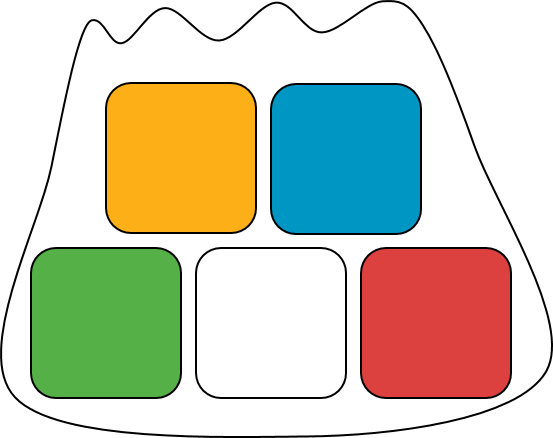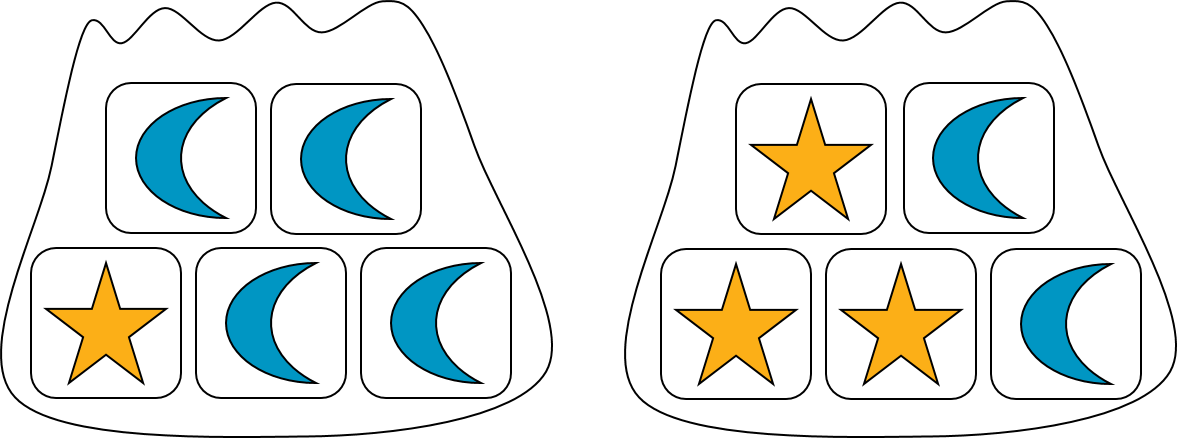Suppose a bag contains 5 blocks. If we select a block at random from the bag, then the probability of getting any one of the blocks is $\frac15$.

Now suppose a bag contains 5 blocks. Some of the blocks have a star, and some have a moon. If we select a block from the bag, then we will either get a star block or a moon block. The probability of getting a star block depends on how many there are in the bag.

In this example, the probability of selecting a star block at random from the first bag is $\frac15$, because it contains only 1 star block. (The probability of getting a moon block is $\frac45$.) The probability of selecting a star block at random from the second bag is $\frac35$, because it contains 3 star blocks. (The probability of getting a moon block from this bag is $\frac25$.)
This shows that two experiments can have the same sample space, but different probabilities for each outcome.

